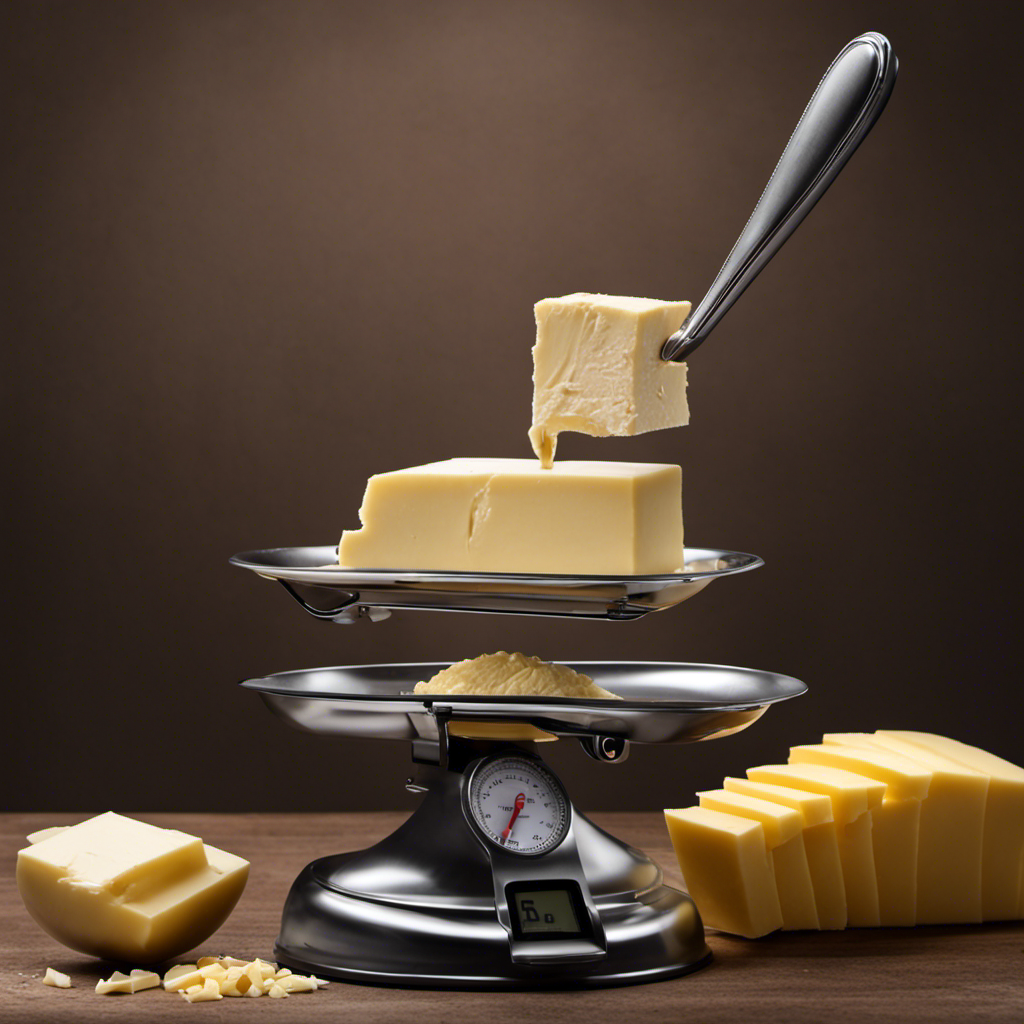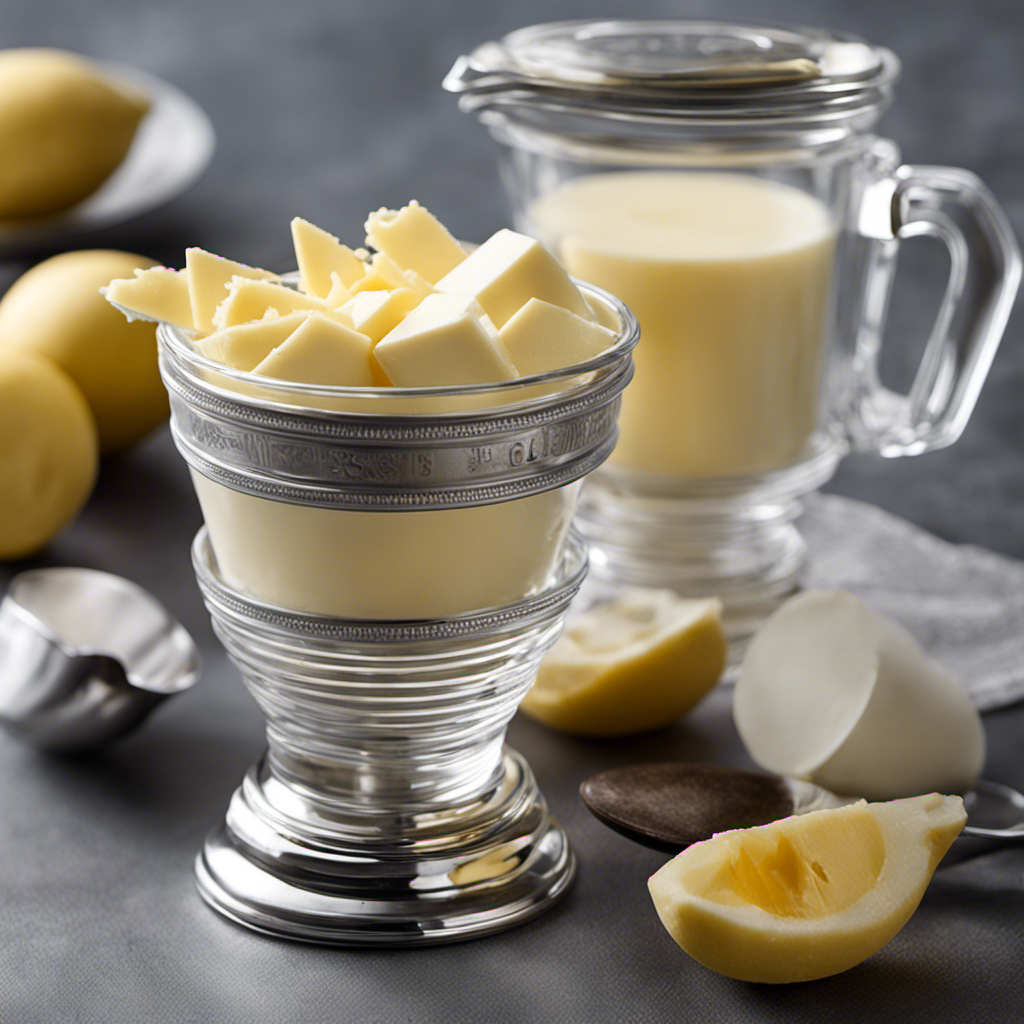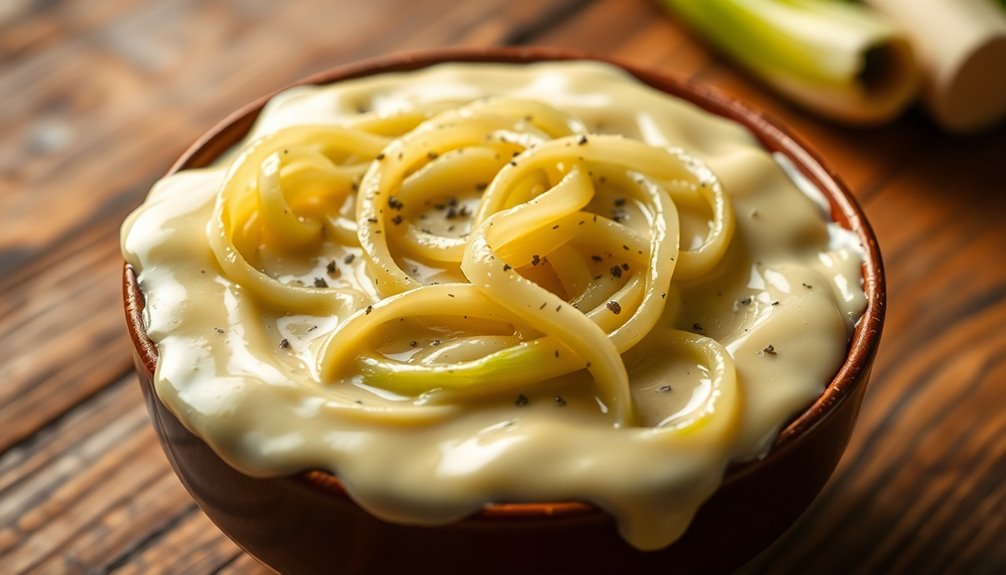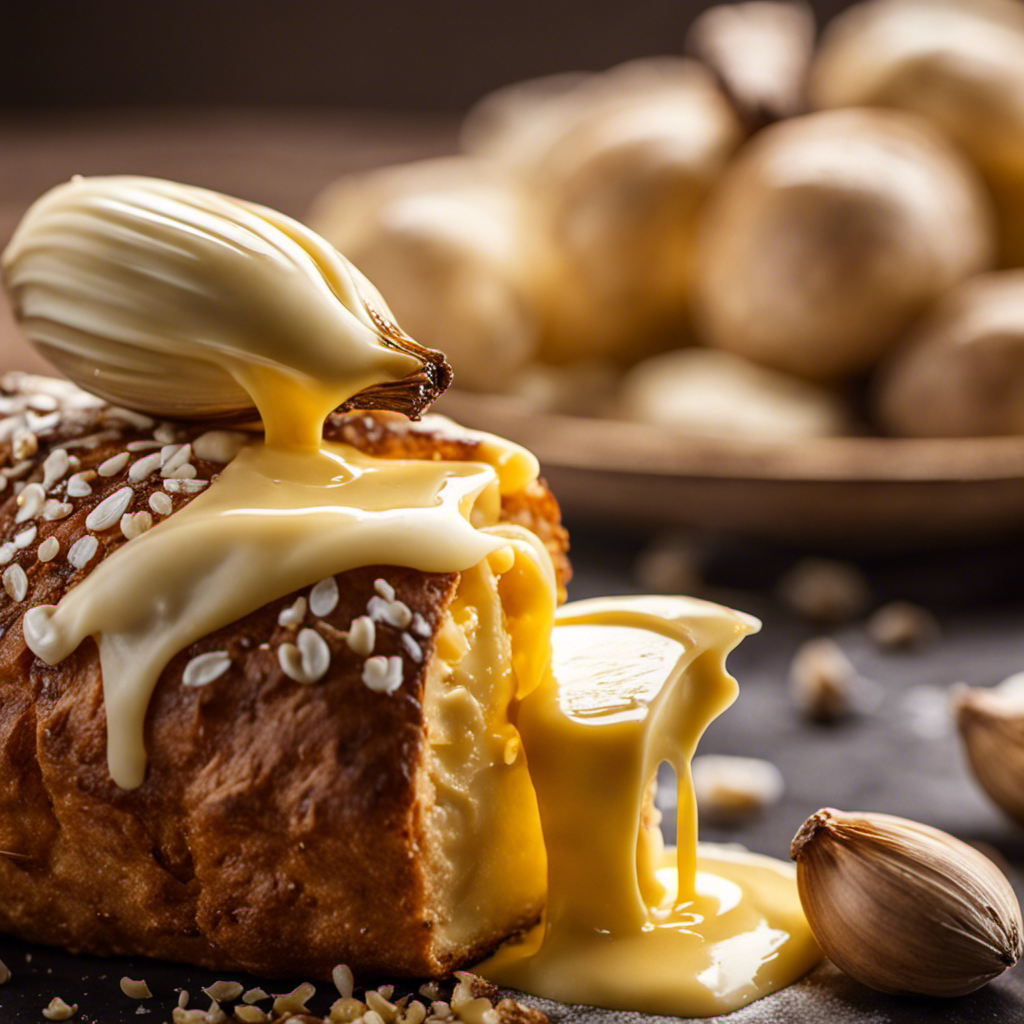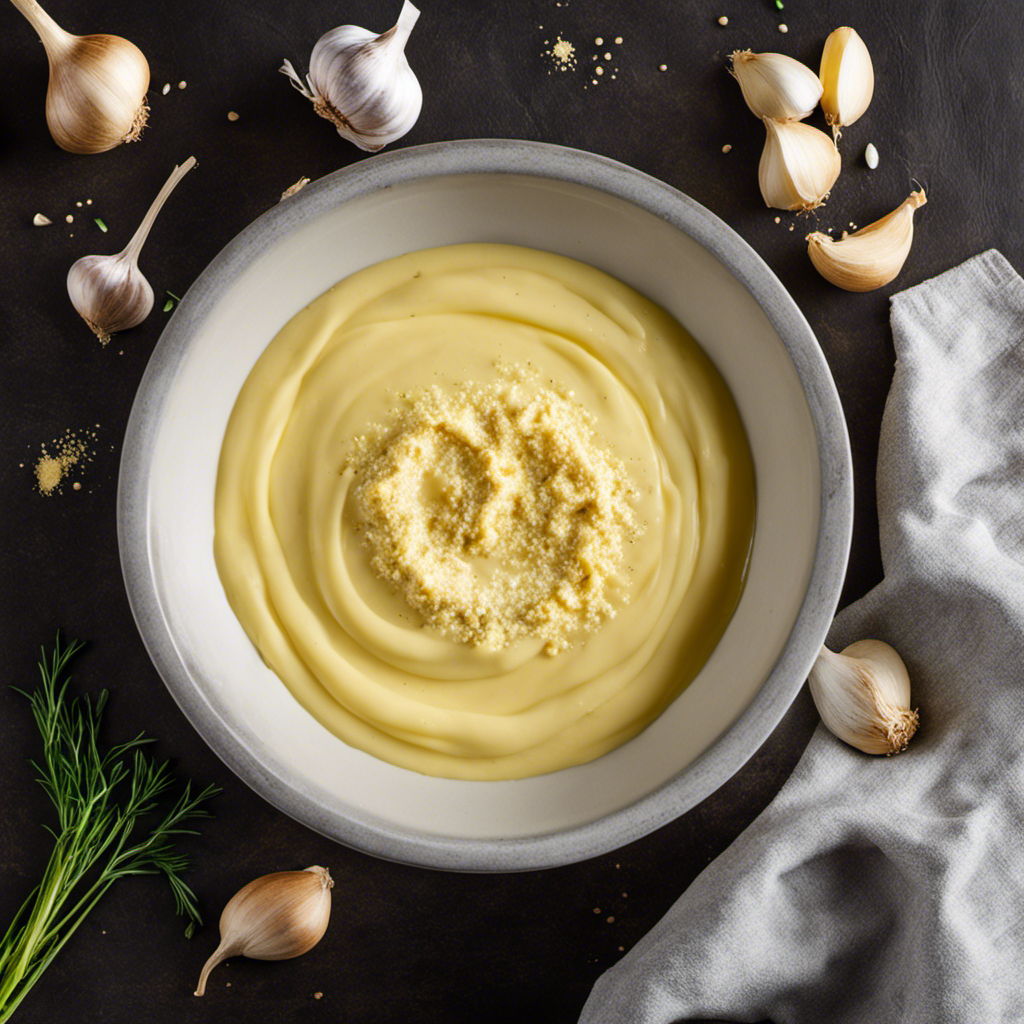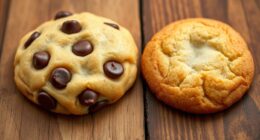Did you know that 2/3 cups of butter can be converted into tablespoons?
In this article, I will guide you through the step-by-step process of calculating the exact measurement. Understanding the measurement equivalents and avoiding common mistakes will ensure accurate conversions for different recipes.
With a handy table of tablespoon measurements, you’ll have the knowledge to confidently convert butter measurements in no time.
Let’s dive in and unravel the mystery of how many tablespoons are in 2/3 cups of butter!
Key Takeaways
- Softened butter should be pliable but not melted.
- Accurate measurements are crucial for achieving desired outcomes in baking and cooking.
- Conversion ratios for butter help determine the right amount to use in recipes.
- Measuring cups and spoons are essential for accurate measurements.
Conversion Factors for Butter Measurements
When converting butter measurements, 2/3 cups is equivalent to 10 and 2/3 tablespoons.
Understanding butter consistency is essential for accurate measurements. To measure butter accurately, start by ensuring it is at room temperature. Softened butter should be pliable but not melted.
For measuring solid butter, use a sharp knife to cut off the desired amount, and then level it off with the edge of the knife.
If you need to measure melted butter, use a liquid measuring cup and pour it in.
Understanding the Measurement Equivalents
When it comes to baking or cooking, accurate measurements are crucial for achieving the desired outcome. In this discussion, I will be delving into two key points: conversion ratios for butter and the importance of using accurate measuring utensils.
Understanding the conversion ratios for butter will help us determine the right amount to use in recipes. This knowledge is essential because different recipes may call for butter in different forms, such as sticks or tablespoons. By knowing the conversion ratios, we can easily convert between these measurements and ensure that we add the correct amount of butter to our dishes.
Using precise measuring utensils is equally important. When we measure ingredients, even a slight difference in quantity can significantly impact the final result. For example, adding too much flour to a cake batter can make it dense and dry, while adding too little can result in a flat and undercooked cake. By using accurate measuring utensils, such as measuring cups and spoons, we can ensure that we add the correct quantities of ingredients for optimal results.
Conversion Ratios for Butter
To convert cups of butter to tablespoons, you can multiply the amount by 16. Conversion ratios are important when it comes to accurately converting measurements in the kitchen.
When you have a recipe that calls for a certain amount of butter in cups, but you only have a tablespoon measurement, knowing the conversion ratio can be very helpful. By multiplying the number of cups by 16, you can easily determine the equivalent in tablespoons.
For example, if you have 2/3 cups of butter, you would multiply 2/3 by 16 to get the answer of 10 and 2/3 tablespoons. This conversion ratio allows you to quickly and accurately convert measurements in your recipes, ensuring delicious results every time.
Measuring Utensils for Accuracy
If you want to ensure accurate measurements in the kitchen, make sure to use the proper measuring utensils. Here are some key measuring techniques and common measurement errors to keep in mind:
- Use a liquid measuring cup for liquids, with the measurement lines clearly marked on the side.
- For dry ingredients, use a dry measuring cup, leveling off the top with a straight edge for precision.
- Measuring spoons are essential for smaller quantities, such as teaspoons and tablespoons.
One common measurement error is scooping flour directly from the bag with a measuring cup, which can pack it down and result in too much flour. Another mistake is eyeballing measurements instead of using the proper utensils, which can lead to inaccurate results. Always remember to check the measurements from your utensils against the recipe to avoid any errors.
Calculating Tablespoons in a Fractional Cup of Butter
You can easily calculate the number of tablespoons in 2/3 cups of butter. To do this, you need to know that there are 16 tablespoons in 1 cup of butter. So, if you have 2/3 cups of butter, you can multiply 2/3 by 16 to get the number of tablespoons. In this case, the calculation would be 2/3 * 16 = 10.6667 tablespoons. However, since tablespoons are typically rounded to the nearest whole number, the final answer would be 11 tablespoons.
Here is a table to help visualize the conversion:
| Cups of Butter | Tablespoons |
|---|---|
| 1/4 | 4 |
| 1/2 | 8 |
| 2/3 | 11 |
| 1 | 16 |
| 1 1/2 | 24 |
It’s important to note that if you’re looking for alternative butter substitutes, there are various options available such as coconut oil, margarine, or even applesauce for baking. These substitutes can be used in equal amounts as butter in most recipes.
Step-by-Step Guide to Converting 2/3 Cups of Butter
When it comes to cooking and baking, accurate measurements are crucial for a successful outcome. One common ingredient that often requires conversions is butter. Understanding how to convert measurements, such as calculating tablespoons accurately, can make a significant difference in your recipe.
In this discussion, we will explore butter measurement conversions, provide a step-by-step guide to calculating tablespoons accurately, and offer tips to simplify measurement conversions for a hassle-free cooking experience.
Butter Measurement Conversions
To convert 2/3 cups of butter to tablespoons, simply multiply it by 16. This is a straightforward conversion that can be easily done with a calculator or even mentally.
However, it’s important to keep in mind some conversion tips and avoid common measuring mistakes. Here are a few things to consider:
-
Use the correct measuring cup: Make sure you are using a liquid measuring cup for liquids and a dry measuring cup for dry ingredients like butter.
-
Level off the measurement: When measuring butter, make sure to level off the top of the cup with a knife or spatula to ensure an accurate measurement.
-
Be consistent: Stick to one unit of measurement throughout your recipe to avoid confusion and ensure accurate results.
Calculating Tablespoons Accurately
When it comes to accurately calculating tablespoons, using conversion formulas and a kitchen scale can be incredibly helpful. To ensure precision, I rely on the following steps.
First, I measure the desired amount of butter in cups using a measuring cup. Then, I take note of the exact weight of the butter on a kitchen scale in ounces.
Next, I convert the ounces to tablespoons using a conversion formula. One ounce is equal to two tablespoons, so I multiply the weight in ounces by two to obtain the equivalent amount in tablespoons.
This method allows me to accurately measure butter in tablespoons, ensuring that my recipes turn out just right. It’s a simple yet effective way to achieve precise measurements in the kitchen.
Simplifying Measurement Conversions
Using conversion formulas and a kitchen scale can simplify measurement conversions. When it comes to simplifying recipe measurements, having the right tools and knowledge is key. Here are three ways you can make measurement conversions a breeze:
-
Understand conversion factors for liquids:
-
Knowing that 1 cup is equivalent to 16 tablespoons helps you convert easily between the two measurements.
-
Similarly, understanding that 1 tablespoon is equal to 3 teaspoons can come in handy when scaling down a recipe.
-
Utilize a kitchen scale:
-
A kitchen scale is a precise tool that can convert measurements accurately.
-
By weighing ingredients instead of relying solely on volume measurements, you can achieve consistent results in your recipes.
-
Keep a conversion chart handy:
-
Having a conversion chart that lists common measurements and their equivalents can save you time and effort in the kitchen.
-
You can refer to it whenever you need to convert between different units, ensuring your recipes turn out just right.
Common Mistakes When Measuring Butter
You might be making a common mistake when measuring butter by not using the correct conversion for tablespoons to cups. It’s important to understand the proper measuring techniques to ensure accurate results in your recipes.
One common measurement mistake is using a regular tablespoon to measure butter instead of a measuring tablespoon. The regular tablespoon typically used for eating is slightly smaller than a measuring tablespoon, which can result in an incorrect measurement.
Another mistake is not properly softening the butter before measuring it. Softening the butter allows for easier and more accurate measurement.
Additionally, it’s important to level off the butter when measuring it, using a straight edge to remove any excess.
Tips and Tricks for Accurate Butter Conversion
One of the tips for accurate conversion of butter is to ensure you properly soften it before measuring. Softening the butter allows for easier and more precise measurement, especially when you don’t have a scale to weigh it.
Here are some tips and tricks to help you measure butter without a scale and adjust butter measurements for different recipes:
-
Soften the butter by leaving it out at room temperature for about 30 minutes, or microwave it for a few seconds until it becomes soft but not melted.
-
Use the markings on the butter wrapper to measure the desired amount. Most butter sticks have tablespoon and cup measurements printed on the packaging.
-
If a recipe calls for melted butter, measure the solid butter before melting it to ensure accurate conversion.
-
Adjust the amount of butter based on the recipe’s requirements. For example, if a recipe calls for unsalted butter but you only have salted butter, reduce the amount of salt in the recipe to compensate.
Converting Butter Measurements for Different Recipes
To accurately convert butter measurements for different recipes, it’s helpful to adjust the amount of salt when using salted butter instead of unsalted. Many recipes call for unsalted butter because it allows for better control of the salt content in the dish. However, if you only have salted butter on hand, you can still use it by reducing the amount of added salt in the recipe. Here are some common conversion factors for butter measurements:
| Measurement | Unsalted Butter | Salted Butter |
|---|---|---|
| 1 cup | 1 cup | 1 cup – 2 tbsp |
| 1/2 cup | 1/2 cup | 1/2 cup – 1 tbsp |
| 1/4 cup | 1/4 cup | 1/4 cup – 1.5 tsp |
When measuring butter, one common mistake is using the wrong unit of measurement. Butter is usually measured in cups or tablespoons, not in grams or ounces. Another mistake is not properly softening the butter before measuring. It’s important to let the butter come to room temperature so that it can be accurately measured and incorporated into the recipe.
Handy Tablespoon Measurements for Butter Conversion
When using salted butter instead of unsalted, it’s helpful to refer to the conversion factors in the handy tablespoon measurements table. This table provides a quick and easy way to convert between cups and tablespoons, ensuring your recipes turn out just right.
Here are three conversion tips to keep in mind:
- 1 cup of butter is equal to 16 tablespoons.
- If a recipe calls for 2/3 cups of butter, you can easily convert it to tablespoons by multiplying 2/3 by 16, which equals approximately 10 and 2/3 tablespoons.
- If you don’t have a measuring cup, you can also use the tablespoon measurement to estimate the amount of butter needed. Simply divide the number of tablespoons required by 16 to find the equivalent in cups.
With these alternative measurements, you can confidently use salted butter in your cooking and baking endeavors.
Frequently Asked Questions
Can I Use a Different Type of Butter for This Conversion?
Yes, you can use a different type of butter for this conversion. Different types of butter, such as salted or unsalted, may affect the taste and texture of your recipe. Consider the pros and cons before making your choice.
How Do I Convert Tablespoons of Butter to Grams or Ounces?
Converting tablespoons of butter to grams or ounces can be tricky. To get an accurate conversion, you’ll need to know the density of the butter. Let’s explore the steps needed for this conversion.
Can I Substitute Margarine for Butter in This Measurement?
When substituting margarine for butter, it’s important to consider the texture and taste of the final dish. While it is possible to substitute margarine in this measurement, keep in mind that different butter alternatives may yield slightly different results.
Is It Better to Measure Butter by Weight or Volume?
When it comes to measuring butter, there are pros and cons to using weight measurements. However, if you want accurate results, it’s best to measure butter by volume. Let me explain why.
Are There Any Special Considerations When Converting Butter Measurements for Baking Recipes?
When converting butter measurements for baking recipes, there are a few special considerations to keep in mind. It’s important to note that 2/3 cups of butter is equivalent to 10 and 2/3 tablespoons.
Conclusion
In conclusion, understanding the conversion factors and measurement equivalents for butter is essential for accurate baking and cooking.
Converting 2/3 cups of butter into tablespoons involves a step-by-step process that can be easily mastered with practice.
Avoiding common mistakes and utilizing tips and tricks for accurate butter conversion will ensure successful recipes every time.
Remember, having handy tablespoon measurements for butter conversion will make your culinary adventures even more enjoyable.
So, embrace the challenge and let the suspense of precise measurements elevate your cooking skills to new heights.

